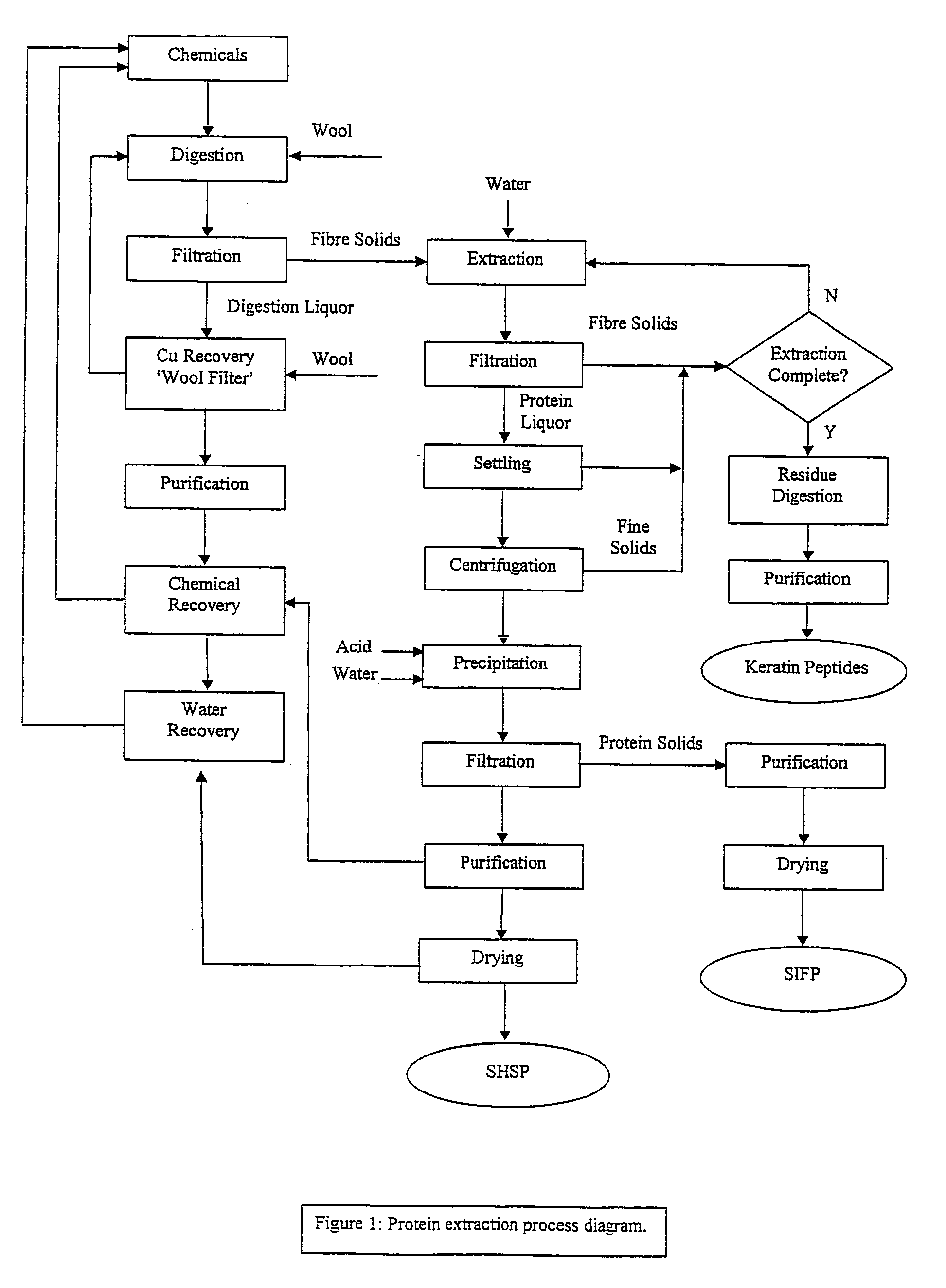Production of soluble keratin derivaties
- Summary
- Abstract
- Description
- Claims
- Application Information
AI Technical Summary
Benefits of technology
Problems solved by technology
Method used
Image
Examples
example 1
Stage 1, Digestion
[0045] The digestion stage of the process involves the use of oxidative sulfitolysis to convert cystine to S-sulfocysteine within the keratin source.
example 1a
Stage 1, Digestion
[0046] In order to extract the keratin from 10 kg of wool, firstly 2 kg of copper sulfate pentahydrate was mixed using a high shear mixer with eight litres of concentrated ammonia. This mixture was diluted to 200 L with water and 10 kg of wool was added. Approximately 15 L of sulfuric acid (2M) was-added to the stirred mixture till a pH 9.4 was achieved. Anhydrous sodium sulfite (5.04 kg) was added and the solution mixed until complete dissolution of all of the reagents had occurred and the pH stabilised at 9.5. The final concentration of the cupric ammonia complex was 0.04M. The sodium sulfite had a final concentration of 0.2M. The temperature of the digestion solution was maintained at 20° C. After 24 hours of gentle agitation the fibrous gelatinous mass of softened wool was filtered. The filtrate was passed through a fresh wool filter, which decreased the copper level in the solution from 1725 ppm to 130 ppm, and further purified using Purolite S93O IDA ion exc...
example 1b
Stage 1, Digestion with the Use of Surfactant
[0047] In a variation of example 1a, the digestion solution was prepared with the addition of 1% of a non-ionic surfactant Triton X 100. The addition of this surfactant resulted in a delay in the release of soluble protein from the fibre, allowing a more effective separation of protein from residual reagents such as copper salts in the extraction solution.
PUM
| Property | Measurement | Unit |
|---|---|---|
| Solubility (mass) | aaaaa | aaaaa |
| Molecular weight | aaaaa | aaaaa |
| Water solubility | aaaaa | aaaaa |
Abstract
Description
Claims
Application Information
 Login to View More
Login to View More - R&D
- Intellectual Property
- Life Sciences
- Materials
- Tech Scout
- Unparalleled Data Quality
- Higher Quality Content
- 60% Fewer Hallucinations
Browse by: Latest US Patents, China's latest patents, Technical Efficacy Thesaurus, Application Domain, Technology Topic, Popular Technical Reports.
© 2025 PatSnap. All rights reserved.Legal|Privacy policy|Modern Slavery Act Transparency Statement|Sitemap|About US| Contact US: help@patsnap.com

